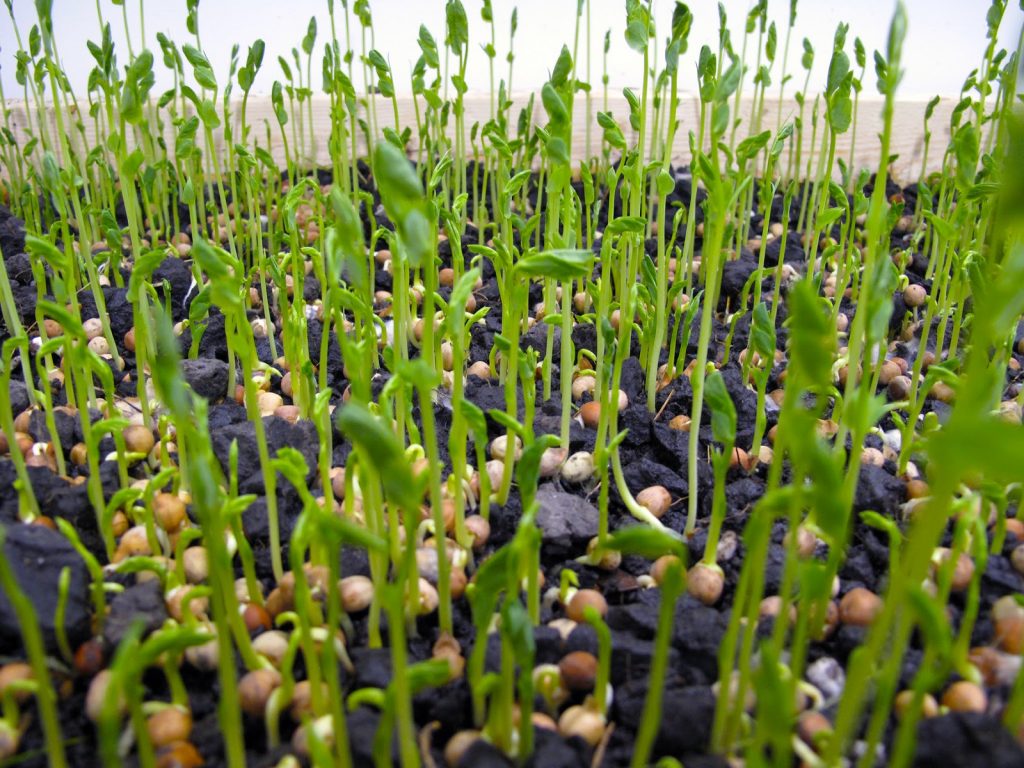MICROGREENS A MUST IN YOUR DIET

MICROGREENS. Introduction and nutritional facts.
microgreen is a tiny vegetable green that is used both as a visual and flavor component or ingredient . Fine dining chefs use microgreens to enhance the beauty, taste and freshness of their dishes with their delicate textures and distinctive flavors. Smaller than “baby greens,” and harvested later than “sprouts,” microgreens can provide a variety of leaf flavors, such as sweet and spicy. They are also known for their various colors and textures. Among upscale markets, they are now considered a specialty genre of greens that are good for garnishing salads, soups, plates, and sandwiches.
Edible young greens and grains are produced from various kinds of vegetables, herbs or other plants. They range in size from 1” to 3” including the stem and leaves.
Among the 25 microgreens tested by the USDA agriculture research department , red cabbage, cilantro, garnet amaranth, and green daikon radish had the highest concentrations of vitamin C, carotenoids, vitamin K, and vitamin E, respectively. In general, microgreens contained considerably higher levels of vitamins and carotenoids—about five times greater—than their mature plant counterparts, an indication that microgreens may be worth the trouble of delivering them fresh during their short lives.
NUTRITIONAL FACTS
Health benefits of microgreens
Turns out microgreens are not just a plain good-for-you food or a healthy garnish on salads and soups. Scientific research now proves that these tiny seedlings harvested and eaten when they are just a few inches tall are a real superfood packed with antioxidants and other health-promoting nutrients.
Nutrition Fact :
Microgreens Provide More Nutrition Than Mature Leaves
A 2010 study published in the Journal of American Society for Horticultural Science reported that young lettuce seedlings, harvested 7 days after germination, had the highest antioxidant capacity as well as the highest concentrations of health-promoting phenolic compounds, compared with their more mature conterparts.
Nutrition Fact 2:
Vitamin C is Abundant in Microgreens
Young edible seedlings are a superb source of vitamin C, an antioxidant that helps protect your body from the harmful effects of free radicals. The 2012 study on microgreens reported that even the microgreen sample that had the lowest levels of vitamin C contained a whopping 20 milligrams of vitamin C per 100 grams – that’s almost twice the amount of vitamin C found in tomatoes!
Red cabbage microgreens had the highest levels of vitamin C among the tested varieties, with a 100-gram portion providing 147 milligrams – or 245% of the daily value – of this vital nutrient. For comparison, an equal-sized serving of mature raw red cabbage contains 57 milligrams of vitamin C according to data provided by the U.S. Department of Agriculture.
Nutrition Fact 3: Many Microgreens Are Loaded With Beta-Carotene
Carotenoids, such as beta-carotene, are thought to reduce the risk of disease, particularly certain types of cancer and eye disease. Carrots are famous for being rich in beta-carotene, but turns out that many microgreens are also a good source of this important nutrient. In fact, some microgreens appear to contain even more beta-carotene than carrots: 12 milligrams per 100 grams compared with 8 milligrams in boiled form. The researchers who analyzed the beta-carotene content of microgreens found that these super-nutritious greens also provide other carotenoids such as lutein and zeaxanthin.
Nutrition Fact 4:
Microgreens Are a Good Source of Vitamin E
For adults, the recommended daily allowance for vitamin E is 15 milligrams of alpha-tocopherol, meaning that eating just a small amount of daikon radish microgreens would cover your daily requirement for this important antioxidant vitamin.
Nutrition Fact 5: MICROGREENS are rich in VITAMIN K.
Greens – Even if Small in Size – Contain Vitamin K
Vitamin K also offers health benefits for humans by promoting normal blood clotting and preventing excessive bruising. Vitamin K also plays an important role in maintaining strong and healthy bones.
The 2012 microgreen study analyzed the levels of phylloquinone (the type of vitamin K produced by plants) in different micro-sized greens, and found the highest levels of vitamin K in amaranth microgreens (Red Garnet variety). The researchers observed marked differences in vitamin K concentration between different microgreens, with the values ranging from 0.6 to 4.1 micrograms per gram
So get all set to indulge into these super healthy power leaves which will add that extra nutrition to your food serving which we all dream of.
This is made easier by raw leaf as these are as good as your own home grown stuff.
Regards
Dr. Vandana Verma
